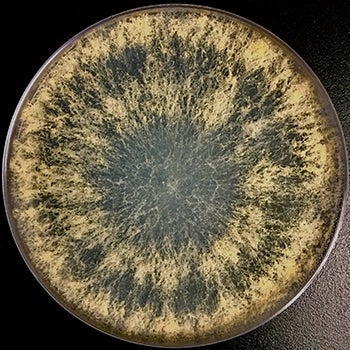
BIOLOGICAL SCIENCES
Tracking the Circadian Clock

Biology dictates that DNA creates proteins that create — among other things — metabolites, the outputs of metabolism. In organisms from fungi to humans, the relationship between these players is heavily influenced by our internal circadian clock, and responds to environmental influences (such as a prolonged day) with implications for industry as well as human health.
“Many disorders associated with disrupting our circadian clocks have links to inflammation, which is an immune system response,” says Jennifer Hurley, assistant professor of biological sciences. “I think that by disrupting our clocks, we may be altering our metabolic output and chronically inflaming our bodies.”
But the system, which is enormously complex, is poorly understood.
To better understand this system, researchers at Rensselaer, Dartmouth, and the Pacific Northwest National Laboratory are collaborating on a project that uses data — tracking levels of RNA and protein in a cell as they fluctuate with the day/night cycle — to create a computer model depicting how the metabolic environment influences cells throughout the circadian day.
“The complexity of this system is phenomenal; the interactions within a single cell could generate millions of data points,” says Hurley, Rensselaer lead on the project, which is supported by a $3.1 million grant from the National Institutes of Health. “The intricacy is unfathomable by the human mind alone, but computer modeling combined with experimentation can help us to understand this system.”
Hurley, an expert in circadian biology, has built massive data sets that track clock-controlled levels of RNA and protein in Neurospora, a fungus which produces cellulases, proteins useful to the biofuels industry because they break down cellulose in plants.
While the more profound impacts of the research may relate to human biology, the project also may make it possible to boost Neurospora’s production of cellulase, a benefit to the biofuels industry.
The research was funded by Rensselaer, the Jefferson Project at Lake George (a partnership of Rensselaer, IBM, and The Fund for Lake George), and a National Science Foundation Graduate Research Fellowship.















